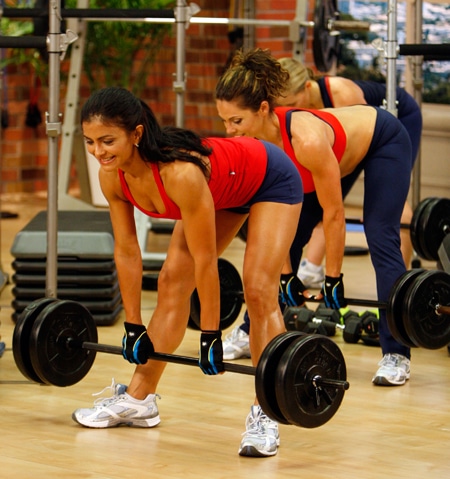
Strength Training Benefits: Can It Increase Longevity?
Most doctors emphasize the importance of aerobic exercise for enhancing heart health and longevity but staying strong may be just as important. In a study published in the British Medical Journal, researchers followed 8,762 men between the ages of 20 and 82 for almost 19 years. Before and during the study, they measured their upper and lower body strength and performance on a treadmill. During the course of this long-term study, they noticed a trend. Men who were stronger had a lower risk for death relative to those who had less muscle strength, regardless of other risk factors for health problems like genetics and lifestyle.
Muscle strength may even serve as a marker for mortality. In one study, researchers found that grip strength and quadriceps strength in older men and women were strong predictors of mortality. Another study showed grip strength to be a marker for frailty in older people. By measuring muscle strength, you can get a pretty good idea of how “young” a person is from a functional standpoint.
Unfortunately, most people begin to lose muscle mass in their 30s and this decline is more rapid in women. “Use it or lose it” applies here since Masters Athletes show little loss of muscle mass until they reach their 70s or 80s. By age 80, the average person who hasn’t strength trained has lost almost 40% of the muscle mass they had in their 20s. That’s pretty significant! This loss of lean mass comes from a decrease in the number of muscle fibers as well as their size.
The good news is even elderly people in their 80s and 90s can boost strength and muscle mass through training. This has been shown in studies carried out in nursing homes. It’s never too late to start training and get the benefits of regular strength workouts.
Strength Training Protects Against Chronic Diseases of Aging
One of the biggest concerns for women past menopause is maintaining bone density. High-impact aerobic exercise helps to preserve bone density, but some research shows that resistance training is just as effective for boosting bone density and protecting against osteoporosis. Plus, resistance training improves posture and balance, two areas that all too many people neglect.
Then there’s the issue of cognitive decline. Many people experience memory problems and cognitive issues as they age, experiencing more so-called “senior moments.” According to a study carried out at the University of British Columbia, resistance training may reverse some of these cognitive issues. Surprisingly, in this study, resistance training was better than aerobic exercise for improving cognition. There’s even some thought that resistance training reduces the risk of progressing to more serious cognitive dysfunction like Alzheimer’s but more research is needed in this area.
How does resistance training improve cognitive function? One animal study showed it “bulks up” the brain. After all, the brain is a muscle – and one that has a remarkable degree of plasticity, the ability to grow new nerve cells and form new connections in response to stimuli. Resistance training may be just the stimuli older brains need to process information more effectively. Want a more efficient brain? Lift weights.
The Take-Home Message
Strength training not only makes you stronger and more functional, but it also reduces your risk for some of the most common age-related problems – osteoporosis, frailty, and cognitive decline. Unfortunately, too many people focus almost exclusively on endurance exercise. You need a certain amount of cardiovascular exercise for the benefits it offers your heart and to burn fat, but don’t let strength-training take a backseat. It’s no less important.
Endurance exercise does nothing to increase muscle mass, and you gradually lose muscle during middle-age and afterwards. By the time you reach your senior years, you’ll have lost so much muscle that your balance and ability to get around will be affected and your risk for falls will be greater. Not a good scenario, is it? Make sure once you reach your retirement years you’re in good enough shape to enjoy it by doing regular strength training.
References:
BMJ. 2008; 337:a349.
J Gerontol A Biol Sci Med Sci. 2006 Jan;61(1):72-7.
Aging, Physical Activity, and Health. (1997) Human Kinetics Publishing.
Age Ageing (2003) 32 (6): 650-656.
Med Sci Sports Exerc. 1999 Jan;31(1):25-30.
The University of British Columbia. “Reversing cognitive decline through resistance training”
Related Articles By Cathe:
3 Characteristics of Healthy, Youthful Muscle That Change as You Age
Is Resistance Training Better Than High-Impact Aerobics for Bone Health?
Exercise During Middle Age Protects Against Muscle Loss Later
Related Cathe Friedrich Workout DVDs:
STS Strength 90 Day Workout Program
All of Cathe’s Strength & Toning Workout DVDs
Total Body Workouts
Lower Body Workouts
Upper Body Workouts

